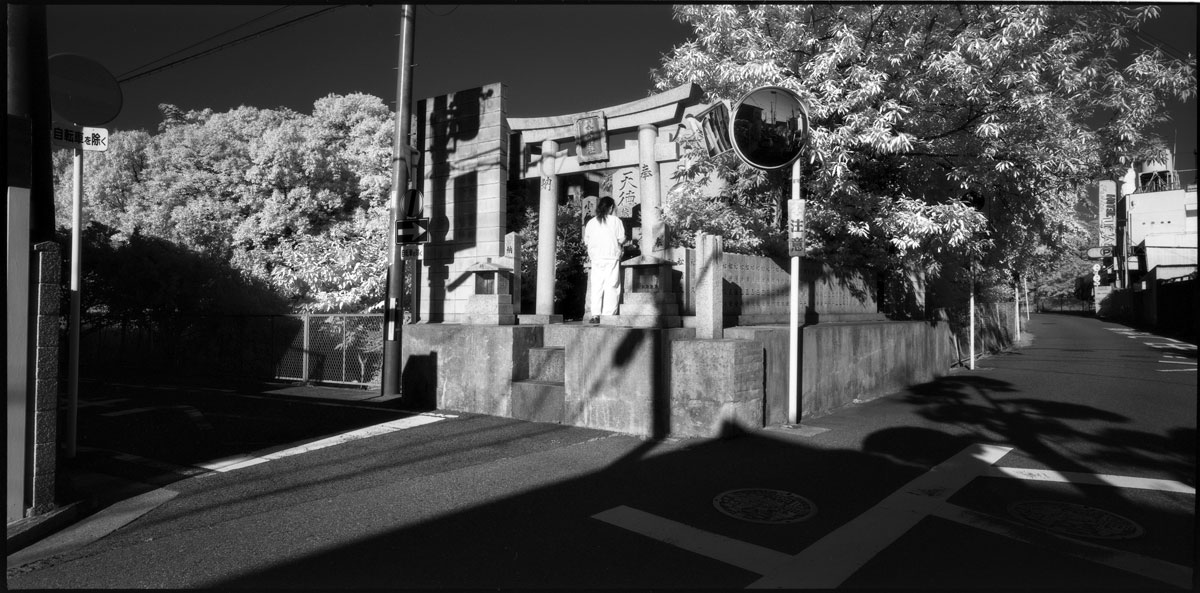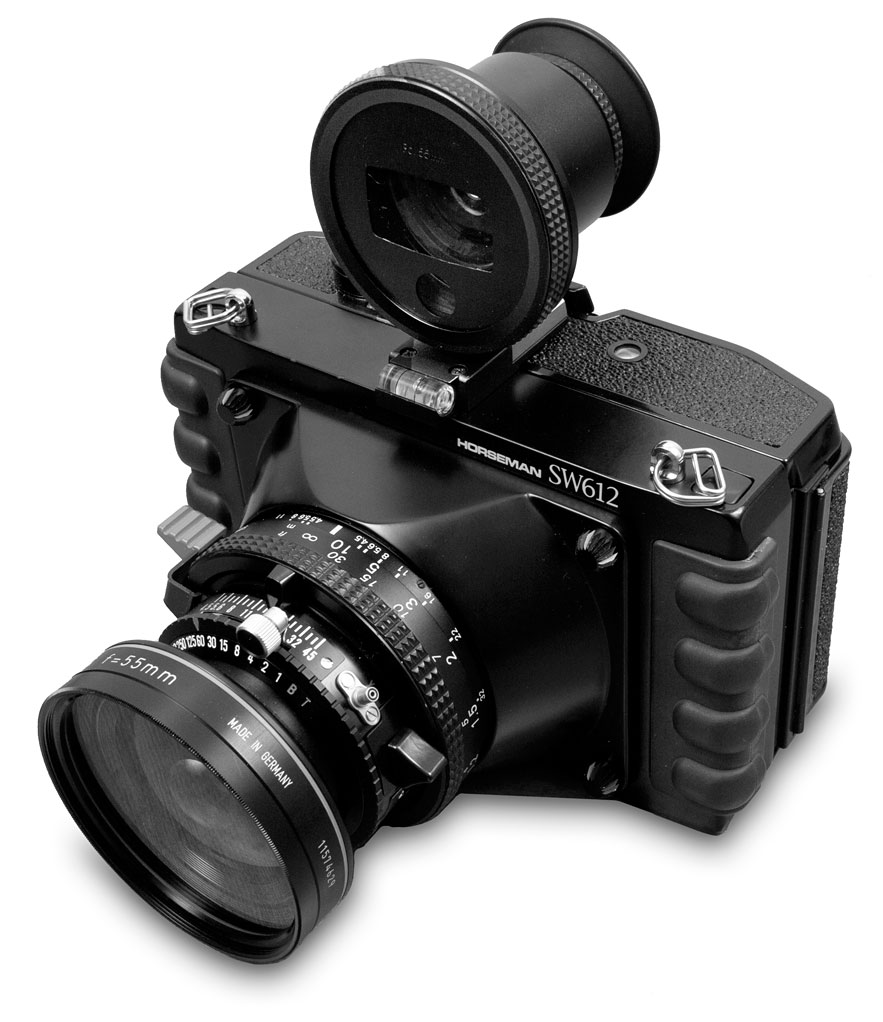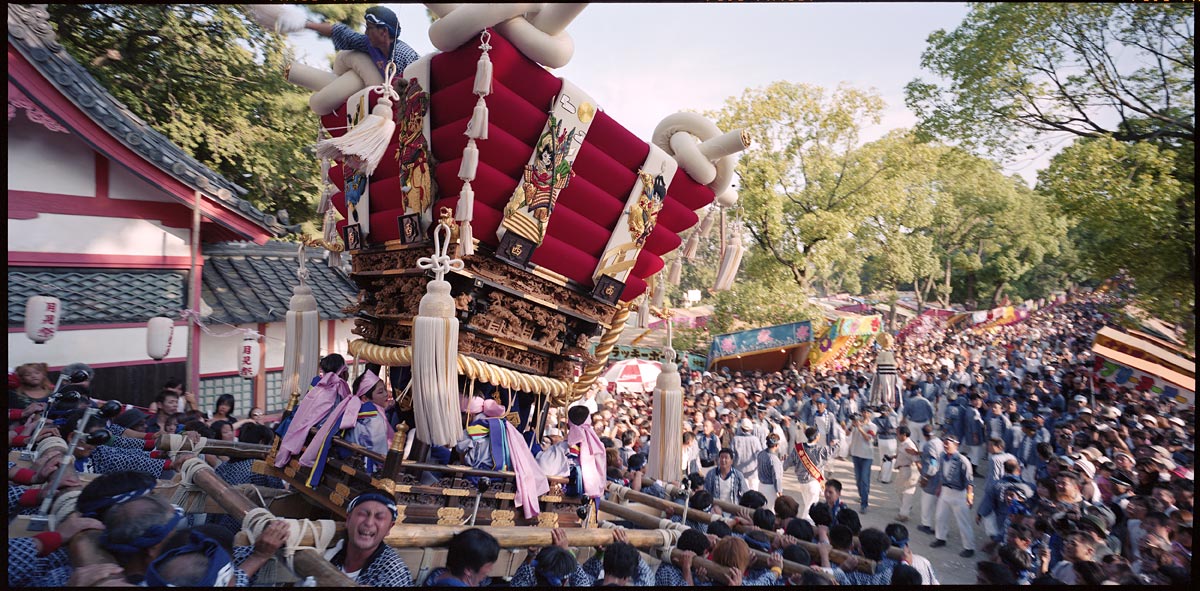The Horseman SW612 is a 6×12 medium-format film panoramic camera. Given the size of the format, the camera is surprisingly small and easy to handhold. I used this in conjunction with my 6×6 Mamiya 6 rangefinder as a complementary format. And, like my Mamiya, I travelled extensively with the Horseman.
Work from this camera can be seen here: Horseman SW612
The camera is entirely manual and rather basic. The process to take a picture requires a number of steps:
- Set the focus
- Set the aperture
- Set the shutter speed
- Cock the shutter
- Frame the image
- Release the shutter
- Unlock the film advance
- Advance the film
Focus is primarily done with zone focusing, using the depth of field scales on the helicoid focusing ring to set the object distance. This is a simple process with short focal length lenses such as the 55mm Grandagon. For the 90mm and 135mm lenses, I used either a ground glass or accessory rangefinder. The ground glass is the most accurate, but slowest method: you need to insert a dark slide into the film back and then swap the back with the ground glass, hopefully remembering to remove the dark slide when the film back is reattached (I attached a brightly colored cord to the dark slide to remind me it was inserted). The accessory rangefinder gave good results for mid to long object distances, but it was a little trickier to use toward the minimum focusing distances.
 Photo: Horseman SW612, 55mm Grandagon, and Konica Infrared Film
Photo: Horseman SW612, 55mm Grandagon, and Konica Infrared Film
The lenses for the SW612 are large-format lenses, which have some limitations. The maximum aperture is designed for focusing and shooting apertures are f/11 and smaller. While maximum apertures can be used, they show corner softness and mechanical vignetting. For short focal length lenses, such as the 55mm, a center filter improves image quality by reducing the natural vignetting of the focal length, but at a cost of a couple of stops of exposure. For using this camera handheld, these place limits and compromises in low light for the photographer. I primarily used ISO 400 films in my cameras.
The viewfinder is bright and clear. Masks are used with different focal lengths. The masks also denoted three formats: 6×12, 6×9, and 6×7. I filed out the markings for the smaller formats to give a cleaner view as I did not have the smaller format backs. Because of distortion, the mask edges were curved. Fortunately, a bubble level mounted on the body can be seen through the viewfinder to easily level the camera for horizontal shots: it was trickier for vertical shots, especially handheld, as judging the camera orientation was difficult. I also used yellow electrical tape on the edges of the lens caps, which could be seen through the viewfinder, to remind me to remove them.
Yet, even with these technical limitations and foibles, the camera was a joy to use. The 6×12 2:1 aspect ratio is flexible in both horizontal and vertical orientations. And in spite of only 6 exposures per roll, the camera is quick to use. Most of the images in our e-book Futon Daiko: A Japanese Festival were taken with this camera.


